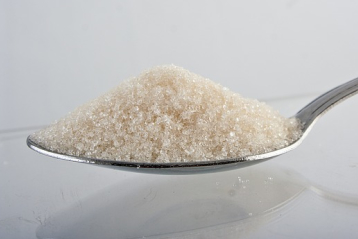Researchers report a 23-200% increased cancer risk resulting from drinking beverages high in sugar.*
“Cancer starts to become a real risk starting in your 40s and 50s and increases as we age,”
Jesse Slome, director of the American Association of Critical Illness Insurance
Sugar and cancer risk, July 5, 2020: Americans consume an average of 17 teaspoons (71.14 grans) of added sugar each day. This adds up to 57 pounds of added sugar each year.
The American Heart Association recommends a daily intake of no more than 6 teaspoons of added sugar for women and 9 teaspoons for men. The current Dietary Guidelines for Americans say that daily intake of added sugars should account for no more than 10 percent of a person’s daily calories. For most adults today, 15 percent of their daily calories come from added sugars, according to the National Institutes of Health.
A report in the Annual Review of Nutrition found a 23–200% increased cancer risk with sugary drink consumption. In 8 of 15 studies on sugary foods and beverages, the 23-200% higher cancer risk was observed with higher sugary beverage consumption. Another study found a 59% increased risk of some cancers. That also was for people who consumed sugary drinks and carried weight around their abdomen.
Planning is vital if you can’t cut sugar and cancer risk
The Dietary Guidelines for Americans 2010–2015 state that soda and other soft drinks account for around half a person’s added sugar intake in the U.S. “The average can of soda or fruit punch provides 10 teaspoons of sugar,” explains Jesse Slome, director of the American Association for Critical Illness Insurance. “Living a sugar-free lifestyle is probably not going to happen. So, planning for the real risk of the health outcomes is vital for us as we age into our mid-life.”
“Cancer starts to become a real risk starting in your 40s and 50s and increases as we age,” Slome notes. “Cancer is treatable and survivable but devastates many financially who aren’t prepared for the costs. For them a modest cancer insurance policy can cover uncovered costs and replace lost income while one undergoes treatment and recovery time.”

* Source. Medical News Today, July 6, 2020
Find costs for cancer insurance using the free Cost Calculator.
Use the Association’s Cancer Insurance Cost Calculator to see an instant cost for $10,000 of cancer insurance coverage. Learn ways to get the best cancer and critical illness insurance. What should you compare when looking at this coverage. How to decide what’s best for you.


